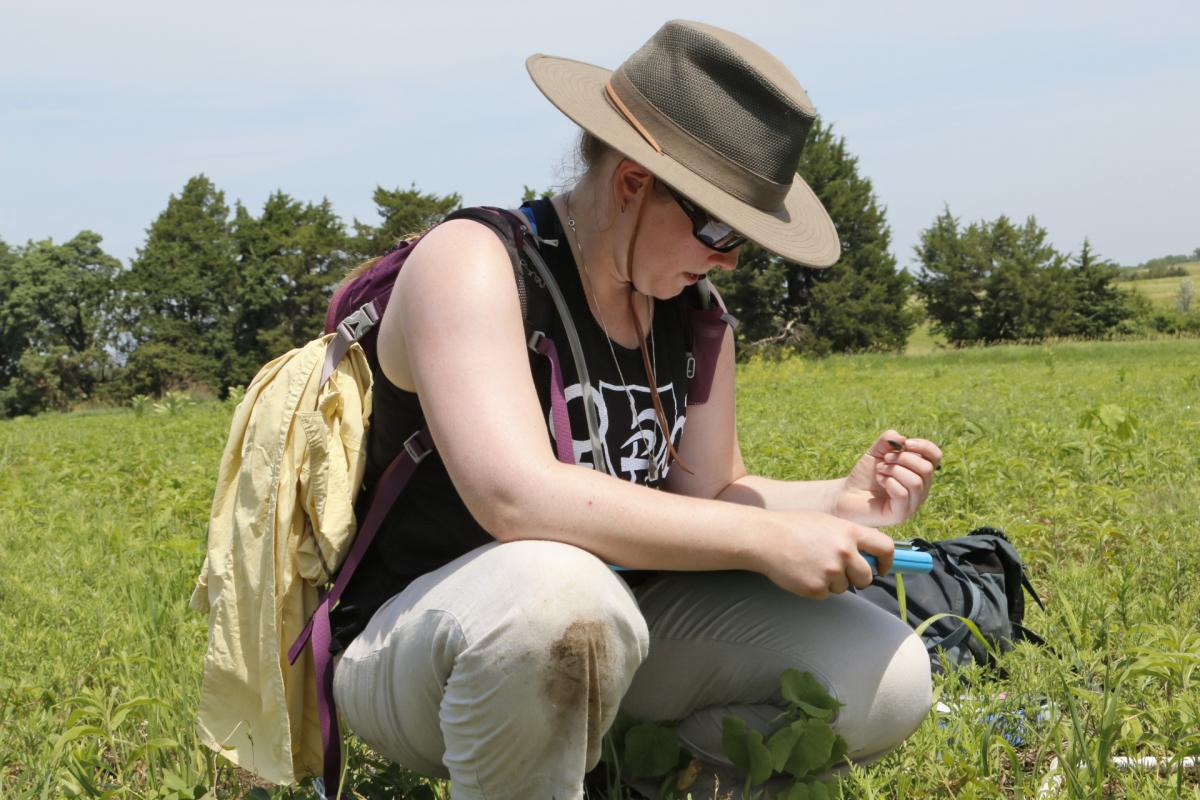NRT doctoral student Katharine Hogan received a $15,000 grant in late July from North Central Region Sustainable Agriculture Research and Education to support her research on prairie restorations and pollinators.
As an NRT trainee, Hogan has worked for about two and a half years in the Prairie Corridor, a 7,600-acre greenway running from Pioneers Park on the west side of Lincoln to the Spring Creek Prairie Audubon Center. She is comparing the effectiveness of two seed mixes for restoring the native prairie habitat and for benefiting bees, which in turn benefit agricultural ecosystems.

The NCR-SARE organization awards funds to at least 15 graduate students in its annual competition, with amounts up to $15,000 per student. Hogan will move onto the grant funding after her NRT funds end in December. She had applied for the grant the year before but was unsuccessful so decided to apply again.
“I basically rewrote the entire grant,” she said.
She lost track of how many hours she spent rewriting the proposal over several weeks but said she learned an important lesson through this effort.
“I learned how to say more with less,” she said, noting the grant proposal portal held strict word limits for each section of the proposal. “The submission portal cut you off after 250 words or 700 words or whatever the limit for that section was. I had a very strict structure to make sure I got my ideas across very concisely. Two-hundred and fifty words is not a lot.”
Hogan said this experience writing the NCR-SARE grant proposal proved valuable and she would recommend other graduate students get practice writing grants.
“I guarantee you’re going to have to do it later on in your career, and it’s a whole different mindset from writing a manuscript,” she said. “It’s very different to write about your science than to convince somebody to pay you for it.”
She first heard of her success in acquiring the grant from her advisor, Craig Allen, who called her while she was working in the Prairie Corridor.
“I’m not checking my email when I’m in the field collecting data, and Craig never calls me,” she said. “He’s called me maybe once. When I saw him calling me, I was like, ‘Oh, gosh. This is either really bad or really good.’”
His really good news of “You got the grant!” left her feeling rewarded for her many hours of effort.
“It was a big boost of confidence,” she said, laughing at the memory. “It’s nice to know that you can write to a bunch of strangers and convince them your science is a good use of their money!”
She had acquired two smaller grants in the past, a J.E. Weaver Grant to cover conference costs and a Nebraska Environmental Trust grant for a proposal she helped write for The Nature Conservancy to acquire a drone, but the NCR-SARE grant was, by far, the largest grant she had ever received.
“It was especially nice having written the unsuccessful grant proposal last year to go back again and nail it the next time and get the full amount that I requested,” she said. “That was satisfying. It allowed me to see my growth as a writer and as a scientist to be able to communicate my ideas and to make a plan more convincingly than I had a year before.”
— Ronica Stromberg, NRT Program Coordinator


